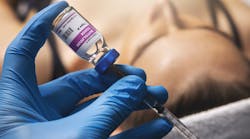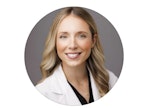Botox for bruxism: Dental hygienists poised to offer this treatment
Listen to the article on our podcast!
Kansas was the first state to pass legislation allowing registered dental hygienists to administer neurotoxin, commonly known as Botox, in 2022. Neighboring state Oklahoma followed soon after. Since these changes, hygienists in these states are able to treat everything from lips to crow’s feet and more.
With their comprehensive training for giving dental injections and knowledge in head and neck anatomy, these types of treatments make sense in the dental chair, and who better to provide them than dental hygienists? A Botox appointment is quick, productive, relatively painless and, frankly, the type of dental appointment patients won’t want to miss.
One of the most useful applications of Botox as it directly pertains to dentistry is how we can use it to decrease the intensity of sleep bruxism. With a few injections into the masseters, patients can experience relief from sleep bruxism in as few as two weeks. Alleviating years of jaw pain and constant broken fillings can be a transformative experience for patients. As more states pass legislation, we can expect patients to seek this treatment from hygienists.
But what if a patient’s sleep bruxism is not just parafunctional and is actually a symptom of obstructive sleep apnea (OSA)? Is treating a patient with Botox in the masseters the responsible thing to do?
To answer this, we must understand the relationship between sleep bruxism and OSA. According to a study published by the Journal of Clinical Medicine, a positive correlation was observed in patients with mild to moderate OSA and sleep bruxism. It states, “SB [sleep bruxism] activity protects against OSA by protruding the mandible and restoring airway patency.”
A study documented in PubMed supports findings from the Journal of Clinical Medicine and asserts, “Improvement in OSAs might prevent exacerbations of SB.” According to Dr. Allan Stein, a dentist at New Jersey Sleep Apnea Solutions in West Orange, New Jersey, “It's important to screen these patients for OSA because bruxism could be masking the true issue. If a patient is bruxing, grinding or clenching as a result of insufficient oxygenation from OSA, neurotoxin will help the symptom, but it will do nothing to stop what's causing the actual problem: OSA.”
You might also be interested in
The buzz about Botox: What dental hygienists need to know
Dental hygienists and Botox: It's complicated
Botox for sleep bruxism
This article aims to address the question of whether it is safe to administer Botox for sleep bruxism in patients who may have OSA and, in doing so, help hygienists to be safe and
confident injectors with this popular and impactful modality.
Knowing how to conduct a comprehensive screening for OSA is vital and can be easily done in the dental chair. One broadly used screening tool for hygienists is the Epworth Sleepiness Scale [ESS]. This questionnaire is implemented in sleep medicine as a screening tool for OSA and other sleep disorders. In the ESS, patients answer questions that indicate whether they’re experiencing excessive sleepiness. Answers are tallied to give a numeric value that indicates how likely or unlikely the patient is to have a sleep disturbance.
Another simple way to screen patients is to evaluate the health of the dentition, specifically taking note of any wear on the incisors. We know that incisal attrition is closely linked to OSA and that often the severity of incisal wear correlates with the severity of OSA.
Another screening tool that can be used is the Mallampati classification system. Mallampati scores assign a Roman numeral value to a person’s airway based on how much of the upper airway is visible when they protrude their tongue without phonation. Studies have shown that a high Mallampatti score is an independent predictor of OSA. Dr. Stein goes on to say, "All patients should be screened for OSA regardless if they are aware they brux," adding, “I don’t have any issues treating OSA patients with masserter Botox before a sleep test. Let’s just make sure we get that test!”
Educating your nonclinical team on the “whys” of the screening process, as well as how it’s done, will ensure consistent language is used throughout your practice. Having conversations with patients when they’re scheduling appointments, or including an ESS in a health history, will prepare them for any chairside dialogue. These systems will also help distinguish your office as a place that’s committed to getting to the root cause of problems, which in today’s fast-paced world of health care is something many patients want.
It’s safe to treat a suspected OSA patient with masseter Botox before a sleep test. However, be sure to educate patients on the relationship between OSA and sleep bruxism and why it’s important to be screened. Train and calibrate all team members on how to talk to patients about OSA and sleep bruxism, and develop a screening system that works for your practice.
Talk to patients about the benefits of sleep tests and know when to refer to the patient’s primary care physician or a sleep specialist. Having said that, knowing you're safe to give these injections should take the guess work out of the equation the next time your patient asks you about Botox for bruxism!
Katie Barrer, RDH, is a certified esthetic injector. She elevates her traditional hygiene skills by integrating Botox and dermal filler into her practice, viewing them as essential components to enhance patients' self-assurance and improve their overall dental health and function. She is a faculty member of the American Academy of Facial Esthetics and looks forward to contributing to the evolution of dental hygiene by educating other hygienists and health-care professionals. Follow her on instagram @theRDHinjector or email [email protected].







